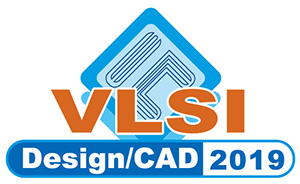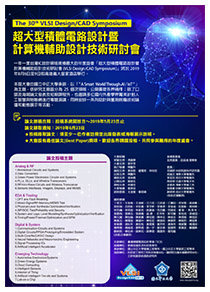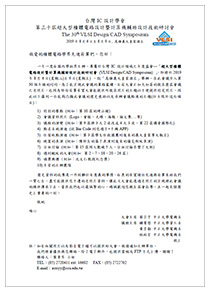Oral 13: Design and Implementation of Deep Learning Based Object Detection Technologies
Session Chair: Kuan-Hung Chen (Feng-Chia University) and Chih-Peng Fan (National Chung Hsing University)Date: Aug. 9 (Fri.), 2019
Time: 10:20 – 11:20
Room: 6F 樂廳
| 順序 | 口頭報告論文 |
| 1 | 10:20 – 10:32 (SC31) Drunk Driving Detection from Face Images Using Deep Neural Networks Chia-Yu Wang, Te-Yun Ma, and Robert Chen-Hao Chang National Chung Hsing University Abstract: Drunk driving usually leads to severe injury or death accidents. Regulations set by government are to prevent it from happening. Thus, this paper will introduce the drunk driving detection system using facial images captured by a webcam. The Breathalyzer was used to label the data to be drunk driving or not. The deep neural network is trained to have the ability to identify whether the individual is drunk driving or not. This resolves the issue of traditional machine learning not being general enough. Experimental results show that the proposed detection system can have better validation accuracy and test accuracy than other works. |
| 2 | 10:32 – 10:44 (SC32) Pedestrian Direction Detection Using YOLO-Based Deep Learning Networks Shih-Chieh Lin, Min-Chi Lin, Yin-Tsung Hwang, and Chih-Peng Fan National Chung Hsing University Abstract: In this paper, a simple and effective deep learning based detection and recognition design by YOLO (You only look once) network is studied for pedestrian direction detections. The proposed image-based detector provides both information of directions and positions simultaneously for pedestrians when the intelligent self-propelled vehicle is moving in crowds. In experimental results, the performances of precision and recall are shown by using the proposed YOLO-based design. |
| 3 | 10:44 – 10:56 (SC33) Car Collision-Avoidance Warning System with Deep Learning on Portable Devices Chuan-Wei Huang, Yu-Hau Huang, Yu-Chieh Chung, and Yeong-Kang Lai National Chung Hsing University Abstract: Developing car collision-avoidance warning system on portable devices aiming to alert drivers about driving environments has become more and more popular. In these systems, robust and reliable car detection is a critical step. This paper presents a vision-based vehicle detection system using a deep learning approach on portable platforms. We focus on the mobile system with camera which is mounted on the vehicle. Integrating detection with tracking is also discussed to illustrate the benefits of deep learning for car detection. Finally, we present the high efficient experimental results based on a portable device mounted on a car. The proposed car collision-avoidance warning system is suitable for selfdriving car applications. |
| 4 | 10:56 – 11:08 (SC34) A reconfigurable processing unit hardware design for AI accelerator Ching-Shun Wang, Yu-Cheng Hsueh, Hui-Ru Chung, and Chung-Bin Wu National Chung Hsing University Abstract: In this paper, a reconfigurable and high-throughput processing unit hardware design for deep learning neural networks accelerator is proposed. To reduce data access between DRAM and processing unit, high data reuse and high computational unit usage architecture are provided. The architecture proposed in this paper implements a Quantization aware INT8 precision, 64-bit AXI bus protocol, and parallel processing with 72 sets of processing units. In this architecture, the internal memory usage is 200 Kbytes, the proposed design working at 100 MHz operating frequency can provide 12.5 GOPS throughput and the average operating unit usage rate is 98.82. |
| 5 | 11:08 – 11:20 (SC35) Design and Implementation of Visual Deep Learning Network via HLS Yu-Ta Lu, Wen-Shen Gu, and Kuan-Hung Chen Feng-Chia University Abstract: Object detection is a technology in the very first priority for machine to become intelligent. Deep learning algorithms have brought obvious detection performance improvement; however, the accompanying huge model size in terms of hundreds of layers and thousands of megabytes of weights sticks the step of physical realization. This article describes the design and implementation in hardware for image recognition with CNN model. It details the design process of hardware accelerator. Instead of manually coded Verilog, the High Level Synthesis (HLS) tool is adopted to generate RTL code used on FPGA to conquer the challenging gap between deep learning algorithm and customized hardware. As a result, a compressed CNN model, i.e., the Agile model [1], with a small size of only 2189KB can be successfully applied to FPGA PYNQ-Z2 for recognition of car, motorcycle, bus and pedestrian. |
指導單位:
教育部資訊及科技教育司
主辦單位:
臺灣積體電路設計學會
承辦單位:
國立中正大學電機工程學系
國立中正大學資訊工程學系
協辦單位:
科技部工程司工程科技推展中心
國研院台灣半導體研究中心
中國電機工程學會
智慧聯網整合推動聯盟中心
中央研究院資訊科學研究所
贊助單位:
聯發科技股份有限公司
日月光半導體製造股份有限公司
威鋒電子股份有限公司
奇景光電股份有限公司
荷蘭商益華國際電腦科技(股)公司台灣分公司
台灣新思科技股份有限公司
財團法人工業技術研究院
瑞昱半導體股份有限公司
聯詠科技股份有限公司
鈦思科技股份有限公司
台灣是德科技股份有限公司
和澄科技股份有限公司
愛爾蘭商明導股份有限公司台灣分公司
一元素科技股份有限公司
力旺電子股份有限公司
博鑫醫電股份有限公司
群聯電子股份有限公司
晶心科技股份有限公司




